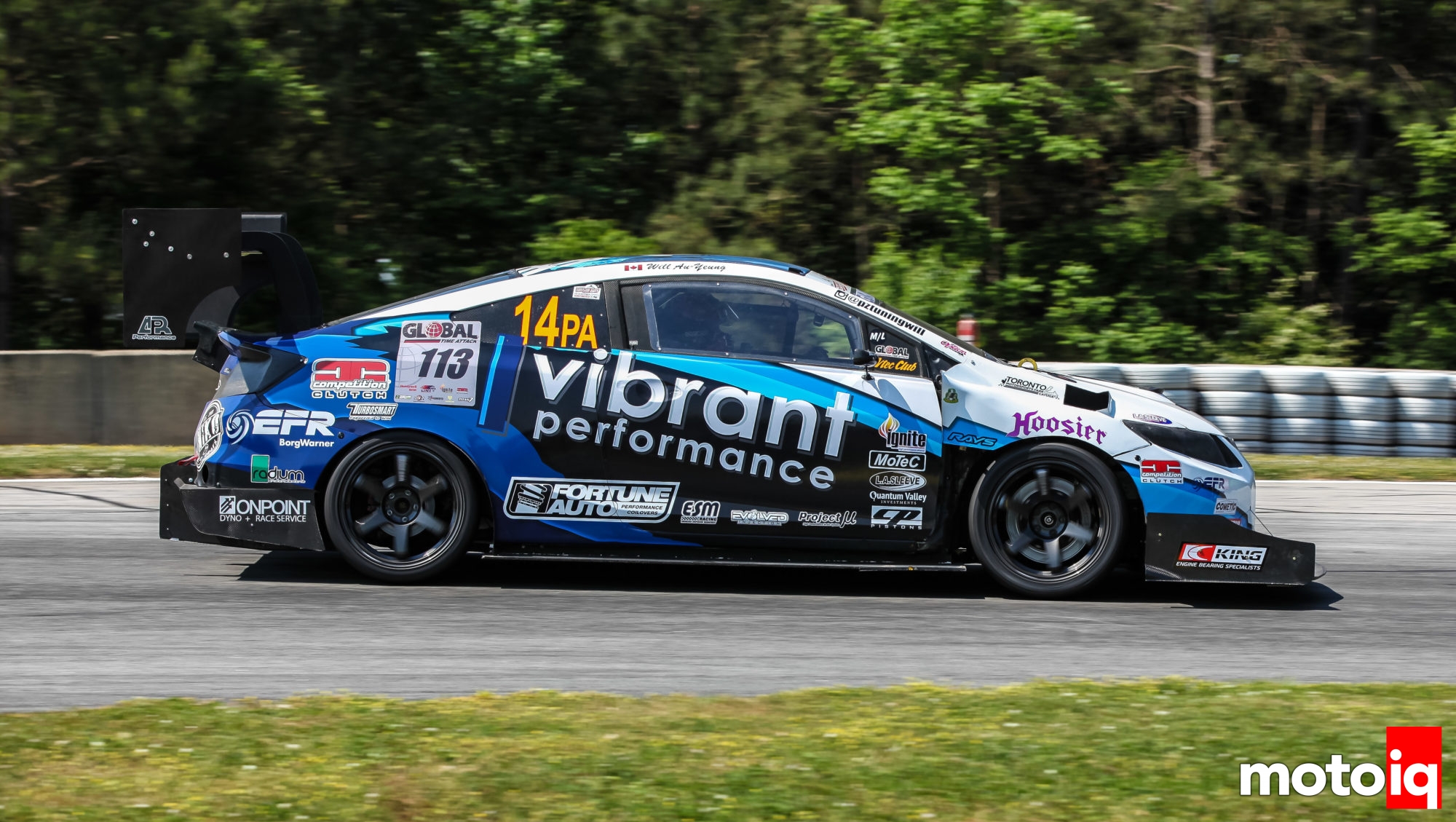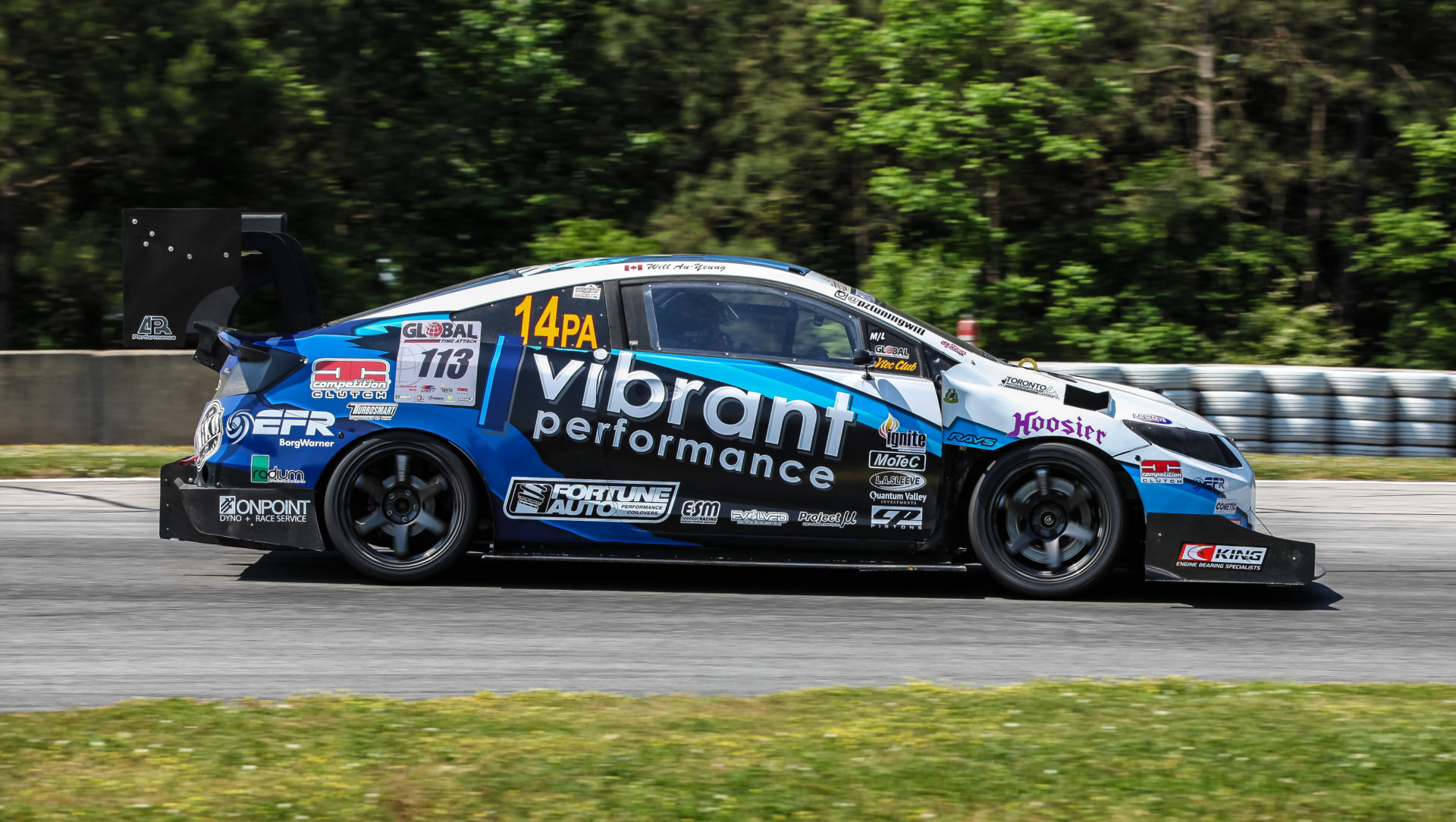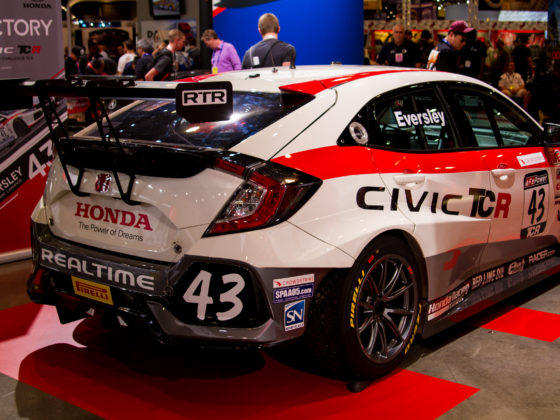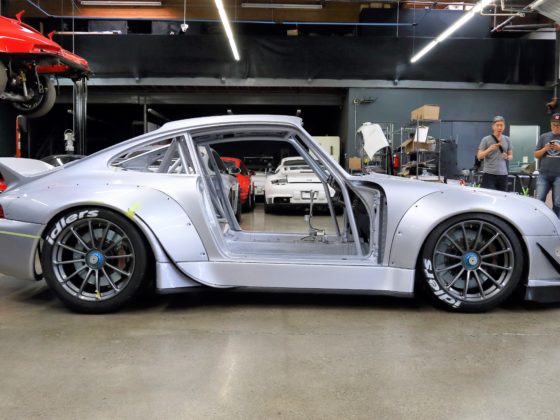
The King of Speed, PZ Tuning’s Amazing Time Attack Civic
At the end of 2018, we take another look at the all-dominating FG4 Honda Civic of William Au-Young. Williams car is an innovative and historical machine that is completely dominating North American Time Attack. The fact that it is front wheel drive is what makes Williams accomplishments even more amazing. Here are the previously never seen inner workings of the machine.
William Au-Yeung has been changing the course of history as of late, time attack history that is, with his amazing 2012 Honda FG4 Civic Si. Not only has William been dominating the FWD Unlimited class, but he has been taking the overall top times at GTA’s Buttonwillow and Road Atlanta events.
William burned up Buttonwillow configuration 13 CW, the North American time attack standard bearer with an unbelievable lap time of 1:37.308 at GTA’s Round One on March 2018. William followed up this amazing performance with a blazing time of 1:19.509 which is in the realm of IMSA GTLM speed and faster than the IMSA’s GTD class, amazing speeds for a full unibody production based car!
Is the PZ Tuning Civic full of exotic technology? Is its body shaped with CFD and verified in a wind tunnel? Is it an untouchable works level effort? The answer is a resounding No! The PZ team is pretty grassroots and the car is buildable and obtainable by people of reasonable means, like William!


The engine’s list of modifications starts with the turbo system, which you cannot see unfortunately due to the K series engine having the turbo on the firewall side with the engine leaning back towards the firewall. PZ Tuning built a custom 4-1 turbo manifold using fabrication parts from Vibrant Performance. A Turbosmart IWG 75 internal wastegate actuator helps control boost pressure and a Turbosmart Kompact BOV helps reduce compressor surge.
A Borg Warner EFR 9180 turbo is hung on the exhaust manifold. We love the EFR turbos due to their advanced performance enhancing features like a low friction ball bearing center section, a lightweight titanium aluminide turbine wheel and an extended inducer tip compressor wheel in a surge reducing ported shroud housing. The turbo also has a large internal wastegate which simplifies the turbo system. These features work to improve response and fight lag over conventional turbos while still flowing enough air to make the engines over 840 whp output.

The stock crank is used, nothing special. King XP bearings are used for the crank and rods. A Skunk 2 Ultra Race Intake manifold and throttle body are used to handle induction duties.

A Cometic MLX head gasket keeps the combustion pressure sealed and the head is held down with Speed Factory L19 studs. Ignition Products multi-spark high output coils are used to keep the fire lit, even with high boost pressures.
To keep the engine lubricated under high G loads which can approach 3 G’s in some turns, a Hytech high capacity baffled pan is used with addtional modifcations for improved oiling by PZ Tuning.




14 comments
I’ve been waiting for a Motoiq spotlight of this car!
“Even a small air leak can reduce splitter effectiveness by 25% or more.”
That’s a surprising amount!
The parts used in this car is really top notch from the Motec ECU, Antigravity RS-30 Battery, and carbon fiber molded front wing with complex 3 dimensional elements-some of the best design I’ve seen on a FWD unibody time attack car in my opinion.
another important thing to know about traction control / boost control, is that boost control is tied to throttle position. at part throttle boost targets are lower than full throttle making throttle modulation much easier / actually possible… small engine and big turbo usually mean the throttle is more or less and on/off switch, giving you 100% power even at part throttle.
question about the swan neck wing mounts. given that these high downforce wings usually have huge endplates, and since the mounts to the deck of the wing cause it to lose efficiency… why not do away with the deck mounts altogether and mount the wing by the end plates?
I have wondered about this too. Any aero experts here?
Yes, endplate mounts should be optimal. It is what you see on LeMans racecars. While it is very difficult to get the best aero config out of a FF, or AWD vehicle, you can look at DTM cars for ideas.
One of the best TA designs I have seen lately is the Escort Evo, in the SST competition. Sean from ‘thenaritadogfight.com’ just did an article on it. I can’t post links here, but it is worth a look. Unfortunately, the engine spun a rod bearing in competition. Better luck, next time.
I do wonder if somebody is going to invest in a MR platform for TA, because the potential downforce levels are far greater than any other chassis configuration. I mean, if Porsche is willing to rebadge a Cayman as a 911 RSR, you know it is for a good reason.
I always felt that an FR chassis in a production based car has the most potential to make the most downforce.
so do you have any sort of credentials that make actually make you any sort of expert on the subject? no offence if you do, but you don’t sound like any more expert on the subject than I am… and most of my “expertise” on aero comes from reading articles like this or listening to podcasts with Andrew Brilliant (an actual aero expert)…
Porsche didn’t “rebadge a Cayman as a 911 RSR” for aero reasons as the car kept the same general shape as when it was rear engine, they did it for the weight distribution.
Mike,
The guy responsible for William’s aero is Alex. He’s the owner of Spage Sport. (he has an Instagram account).
Get in touch with him and ask him. Very nice guy!
Obviously, I don’t know the TA rules off the top of my head. But, you work so hard to create downforce, and lose it all when you don’t have rigid side skirts. During the heyday of DF in F1, they had sliding side skirts with titanium edges (to minimize wear), which actually made contact with the ground plane.
“Due to the increased level of cornering speeds in Formula One during the 1979 season – which led to lap times some 6 seconds quicker than in previous years – the FIA decided to introduce a mandatory flat underside and banning the side skirts for the F1 cars.”
“Using inverted wing shapes within the sidepods and large side skirts that created a phenomenal amount of downforce. The Lotus 78/79 was the class of the field in the 1978 season (reliability was a major issue in the previous year) winning 8 out of the 16 races, with Chapman continuously evolving the concept through the year. In fact, the car was so good that it led Mario Andretti to comment, “Its like it’s painted on the road.””
“The evolution of Ground Effect on the Lotus 78 came about by accident. Peter Wright was at Imperial College, London, testing out the idea of putting water radiators in the leading edge of the side-pods. In a bid to try and improve on the unsuccessful Lotus 77, Wright was using a wind tunnel with a rolling road, a novelty at the time. However, the instrumentation began to show some unrepeatable results. Closer examination showed that the side-pods on the model were sagging, and as they got closer to the floor of the wind tunnel, the downforce increased.That indicated two things: (1) that the side pods had started to generate downforce, and (2) that it had something to do with the gap between their edges and the ground.
Wright then proceeded to cut up bits of cardboard, extending the side-pods right down to the ground – the downforce level doubled. This accidental discovery showed the importance of maintaining an air-tight seal along the bottom of a car with profiled side-pods, and resulted in the successful Lotus 78 of 1977.”
This sort of side skirt is illegal.
I assume it is a rule against a ‘moveable aerodynamic device.’
There are nylon brush side skirt designs, that are flexible, but technically not ‘moving.’
Sorry, if I am just talking off the top of my head, but I really don’t want to read the rulebook.
Since you asked I am an ME, a professional Motorsports engineer with a pretty good track record and pretty well known and respected in the industry. I just don’t talk like one. Aero is not my core competency but I have designed aero packages on a couple of successful cars without the benefit of computational tools just testing and looking at data. I am always open to people’s opinions and like to hear people’s ideas. I could go on about why I think an FR race car can generate more downforce if it is a production-based class but it would be off topic. Still, it would be interesting to discuss.
Mike, I’m fully aware of your credentials. I was asking joe when I asked for credentials with that post. mostly building off your comment to my end plate mount question, asking if any aero experts could chime in. joe came in with answers and a bunch of copy/paste info, so I’m curious if its just copy/paste info with some of his own uneducated (not as an insult, but as in no formal education/experience in this field, just self education reading online) opinion.
ps.
I’ve said hi a couple times when I saw you at FD Seattle. I was warmmilk before motoiq got the new website, I just put bob under the name field as the generic name I usually use for these kinds of fields, by the time I realized I should have been posting under warmmilk I’ve already had a bunch of posts under bob and decided to stick to that
Ah ok.
Either you are feeling to worry to solve your management assignment. You have one of the great option fullassignment.com. Our expert team provides the all type of management assignment help to the student as a reference in the minimal price. We provide the best assignment help to students. For more info please visit our website: https://fullassignment.com/
https://fullassignment.com/services/management-assignment-help
or reach out us on whatsapp – (+1) 669-271-4848